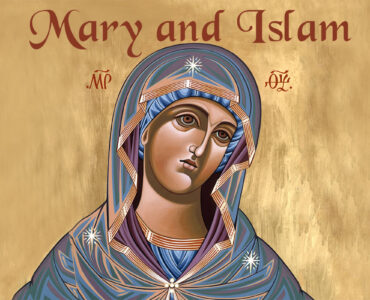
The Muslim Reaction To The Colonial Order
The return of China to the Central Asian scene took place through a series of decisive events following the Manchu conquest of Dzungaria. As early as 1715, the regents of Qomul (Hami in Chinese) pledged allegiance to the Qing emperor Kangxi (r. 1662–1722) and opposed the Dzungars. Five years later, several regents of Turfan surrendered to general Yongzheng’s army. Under Qianlong (r. 1736–1795), the Qing troops seized the Ili basin in 1755 and Kashgaria in 1759. That same year, the Āfāqī leaders Burhān al-Dīn Khwāja and Jahān Khwāja were captured and executed, and the head of the latter was put on display in the streets of Beijing. Although this ritual celebration of victory clearly distinguished the banquished from the victors, the reality on the ground was far more complicated. On the one hand, the new colonial order imposed by the Qing Empire over the “Muslim frontier” (huijiang) had to be gradual, constantly adapting itself to the socio-religious structures of Eastern Turkestan. On the other hand, the Turkestani society itself harbored ambiguous feelings towards this “infidel” and recently arrived Sino-Manchu power, and seemed to hesitate between resignation, acceptance, and revolt.
The “Muslim frontier” was completely reorganized with a new division of the territory and the appointment of a military administration. Such a reorganization was of course for the purpose of controlling the frontier region, but also to allow the settlement of various populations migrating — whether banished or financially encouraged to leave — from China. Regarding Islam, the Qing colonial representatives did not intervene in religious affairs. However, after having tried to manipulate the Khwāja religious authorities, playing on the rivalries between Āfāqīs and Ishāqīs, the Qing removed from power the leaders and their supporters, mainly Āfāqīs, who fled to Ferghana in the Kokand khanate. Instead, a large number of native officials called in Turkic beg, who existed well before the conquest, were in charge of the executive power at the local level.
Sufi Activism And Networking
Despite the apparent stability of Eastern Turkestan at this time, the region was thrown into a series of turmoil, which demonstrated that Islam in general and Sufism in particular remained a political force in this periphery of the Islamic world. More than ten uprisings took place between 1797 and 1864, and involved different regional actors, outside and inside huijiang. The Kyrgyz tribes, among whom the exiled Āfāqī Khwāja enjoyed great popularity as is shown by the oral folklore, played a crucial but shifting role as military support. The Kokand khanate, meanwhile, had a more overtly political role to play: in the name of Islamic solidarity, the khanate supported the Khwājas’ incursions in order to control Kashgaria and the trade routes towards China. Inside Eastern Turkestan, the role of the begs in the insurrection movements was highly ambiguous as well, for their loyalty towards the Qing empire often contradicted their Sufi sympathies and the patron-client alliances established among powerful families and religious groups. Not surprisingly, the most prominent actors were the Sufi leaders, particularly the Naqshbandīs, who aimed to regain control over the believers and to expel the infidel ruler from the “Abode of Islam” (dār al-islām). Whether in 1826, when the Āfāqī Jahāngīr Khwāja (d. 1828) conquered the Southern oases for a short period, or in 1864, during the Kucha revolt conducted by the Naqshbandī Rāshidīn (d. 1867) along with Chinese Muslim insurgents, the stake of what was considered holy wars (jihād, ghazāt) of that time were indistinctly political and religious. Rebels cut the Manchu-style queues (ponytails) of the non-Muslims and forced them to convert to Islam, religious legal edicts (fatwā) were published to legitimize the combat against the infidels, Chinese idol temples (būtkhāna) were demolished, and Sino-Manchu officials were executed, etc. Whatever the role of defections and betrayals, of opportunism in regional or local politics, of social anger — in other words, of all the non-religious factors, these rebellions involved competing Sufi solidarities and networks, which promoted their own vision of Islam and were able to resist the colonial order. Once again, Eastern Turkestan experienced very early on something that many other Muslim areas were about to learn under Western or Russian colonization. Once again, Islamic thought, here more precisely the ideals of political Sufism and living saints’ sovereignty, were soon to be questioned and challenged by the Muslims themselves.
The most active Sufi networks of that period were by far those of the Naqshbandiyya. Recent scholarship, complemented by interviews with descendants as well as written documents from Sufi private archives, draws a general picture of these networks connecting Eastern Turkestan to Northwestern China. Three main trends can be distinguished: “classical” Naqshbandiyya, Naqshbandiyya Mujaddidiyya and Naqshbandiyya Qādiriyya. The first trend is epitomized by the group founded by Ma Laichi (d. 1753), a spiritual descendant of Āfāq Khwāja from Gansu. Called Khafiyya (Hufuye in Chinese) because of their preference for the silent recitation (dhikr-i khafī), they came into conflict with a group introduced by Ma Mingxin (d. 1781), a Naqshbandī from Gansu, and called Jahriyya (Zheherenye in Chinese) as they practiced the loud recitation (dhikr-i jahrī). Both spread throughout Gansu and Qinghai and became extremely powerful, to the extent that they braved the Qing domination in the second half of the nineteenth century. The second trend was the Mujaddidiyya, a reformed Naqshbandiyya which had been initiated by the Indian Ahmad Sirhindī (d. 1624) and entered the Tarim basin through separate main branches: a branch introduced in Ayköl (a town near Aksu) by an Indian master in the mid-eighteenth century, a second branch founded in Yarkand by an Afghan Badakhshani master in the late eighteenth century, and a third branch established in Kashgar by a master from Fergana in the early nineteenth century. All these communities spread in Western China, including disciples and vicars of various ethnic origins, including Turks, Huis, Mongols, and Salars. The third trend concerns this last ethnic group and, more precisely, the case of a prominent Salar figure named ‘Abd al-Qādir Salārī (d. 1900). Trained in Yarkand by Badakhshani and Turkestani mentors, and later by the Hui master Ma Wenquan, Salārī received, like many Mujaddidīs, spiritual initiation to four “schools”: Naqshbandiyya, Qādiriyya, Chishtiyya, and Suhrawardiyya. Interestingly, his teachings synthesized Naqshbandī and Qādirī practices, and this explains why he and the descending lineages in Qinghai and Gansu have all been labeled as Qādirī until today.
Such a complex picture shows the expansion but also the fragmentation of Sufism and Islam in the nineteenth century. The conflicts between the Sufi lineages as well as their ambivalent opposition to the Qing colonial authorities betray a crisis at the very core of Islamic thought in the sense that political Sufism seemed to fail and that the power of living saints could apparently not equal that of the former “friends of God” (awliyā).
The Emirate Of Ya‘qūb Beg
In the midst of this turmoil, the Kokandi general Ya‘qūb Beg (d. 1877) rose to power. Sent by the Kokand ruler ‘Ālimqul (r. 1862–1865) to support the revolt of 1864 in Kashgaria, the general and his army were accompanied by a descendant of Āfāq Khwāja, Buzurg Khwāja (d. 1869) in order to give a saintly legitimacy to the military intervention. And it is true that, when they conquered the region, Buzurg quickly reintroduced symbols (costumes, clothing, banners) and practices (conversions of Chinese, initiatory rituals, veneration of the Khwāja dynasty) characteristic of the ishanate. However, from the Kokandi side, Buzurg’s role needed to remain purely formal and he was forced to exile in 1866. Later, Ya‘qūb Beg became the sole ruler of the emirate of Yettishahr or “Seven Cities” (Kashgar, Yarkand, Khotan, Aksu, Kucha, Turfan and Ush Turfan). Several primary sources, especially the two chronicles written by the Turkestani historian Mullā Musā Sayrāmī (d. 1917), have described the regime in detail, emphasizing its Islamic nature. In the entire territory reorganized in provinces (wilāyat), the Shari’a was strictly enforced and authoritarian fatwas were regularly issued. It became illegal to smoke, to drink wine, to play music, to not wear turbans in public spaces for men and to walk outside unveiled for women. Religious education was promoted and numerous madrasas opened. Nearly sixty religious buildings were built or repaired. For example, the famous Idkah mosque in Kashgar was restored and a madrasa built next to it; the graves of Satūq Bughrā Khān in Artush and of the female saint Buwī Maryām in Bishkiram (near Kashgar) were repaired; the shrine of Āfāq Khwāja was embellished and enlarged. Ya‘qūb Beg himself firmly observed Shari’a and made pilgrimages on these holy sites to get their charisma and present himself as an heir of the former saintly rulers. Finally, though treatises were signed with Russia and England, even negotiation letters exchanged with the Qing, the emirate’s foreign policy was mainly oriented towards the Muslim world through the Ottoman court, capital of the Caliphate. The ambassador and Sufi leader Ya‘qūb Khān Tūra (d. 1899), in search of military and political support, was instrumental in activating Sufi networks in Istanbul for his diplomatic purposes. Behind the Great Game opposing the neighboring empires of Central Asia, a less visible history was at work. Ya‘qūb Beg’s Islamic regime put an end to the political power of Sufi saints, the Khwāja especially, and reduced Sufi authorities to mere agents of his policies. Contrary to the ishanate, it was no longer acceptable to build a society inspired by a Sufi model of community. Saints were still venerated as sacred sovereigns, but only if they belonged to the past of Eastern Turkestan. Muslim holy figures became the foremost yet buried markers of the Islamic territory, as is explained in Sayrāmī’s description of Yettishahr’s oases.
The Muslim Reaction To The Colonial Order
803 – 021
Home
Last Updated: 04/2022
See COPYRIGHT information below.



